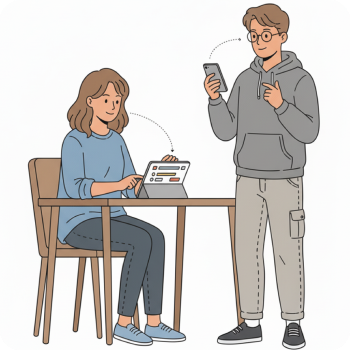
How a Free Autism Test Empowers Self-Understanding
For many families and self-assessing adults, the autism test free route offers a low-barrier starting point that reduces anxiety about cost and logistics. A thoughtfully designed questionnaire can surface themes such as masking, monotropism, or executive function challenges. Results typically provide range-based indicators along with neutral, nonjudgmental explanations that help people recognize patterns without stigma. With that shared understanding, the next step, seeking confirmation or support, feels far more manageable.
- 1Short, structured items prevent decision fatigue and keep focus on real-life experiences.
- 2Neutral wording reduces bias and encourages honest, reflective answers.
- 3Clear next steps empower people to talk with doctors, counselors, or educators.
- 4Accessible formats support screen readers and mobile devices for inclusive use.
People new to screening appreciate plain-language instructions and clear time estimates, which build confidence from the outset. Some platforms present a free autism test with immediate summaries and printable notes for medical or educational appointments. Adults who suspect lifelong traits value questionnaires calibrated for grown-up experiences, including workplace routines, relationships, and sensory self-regulation. In addition, a free autism test for adults can help articulate strengths and challenges, which is especially useful when preparing for a formal evaluation.

Accessible Adult Autism Testing for Families
When comparing options, people value explanations that separate screening from diagnosis with care. Some individuals turn to an autism test online for free to explore patterns prior to scheduling a clinical consultation. This approach can shorten waitlists by helping users arrive prepared with a concise summary of experiences. It also supports informed consent, ensuring that the person understands what the questions measure and what they do not.

Clarity is also essential for families supporting children and teens, as multiple contexts, home, classroom, community, shape behavior. Many users appreciate a free online autism test that offers tailored guidance for different age groups and developmental stages. Meanwhile, communities with limited healthcare access benefit from free autism testing that points to local clinics, telehealth options, and educational accommodations. Ethical tools avoid pathologizing language and emphasize strengths-based framing alongside practical next steps.
- 1Look for evidence references and validation notes that cite peer-reviewed sources.
- 2Seek tools that provide separate guidance for adults, teens, and caregivers.
- 3Prefer platforms with clear privacy policies and data retention limits.
- 4Use the summary as a conversation starter with licensed professionals.
Free Online Autism Test: How to Compare Options
Most questionnaires use Likert-style responses to map traits across domains like social reciprocity, sensory sensitivity, and routine preference. A progress bar and autosave improve completion rates, while plain-language definitions reduce confusion about abstract items. Adults who want age-relevant context may prefer instruments that include workplace, relationship, and independent-living examples. People seeking immediate, accessible insights sometimes explore an autism test adults free to prepare for a more in-depth evaluation later. Comparing tools is easier when you look at item count, average completion time, scoring transparency, and audience fit. Some platforms provide a printable summary and a conversation guide for doctors or school teams. Others include links to community supports, peer groups, and reading lists that help translate insights into action. Individuals who prefer mobile access may opt for an autism test free online to complete on a phone or tablet while maintaining the same scoring criteria.
| Screening Tool | Approx. Time | Audience Fit | What It Highlights |
|---|---|---|---|
| AQ (Short Forms) | 3–7 minutes | Adults | Social attention, detail focus, routine preference |
| RAADS Short | 7–12 minutes | Adults | Developmental history, sensory traits, masking patterns |
| CAST Variants | 5–10 minutes | Children/Teens | Communication, play style, peer interaction |
| SPQ/Related | 5–8 minutes | General | Sensory seeking, avoidance, modulation challenges |
After completion, users typically receive a range-based indicator with guidance to consult a clinician for formal assessment when indicated. Tools that explain confidence ranges and limitations help prevent misinterpretation and reduce anxiety. People seeking a low-friction starting point often try an autism free test as a way to collect thoughts before discussing concerns with trusted professionals. The best experiences emphasize dignity, accessibility, and actionable next steps rather than labels alone.
Learn Before Diagnosis
Scores should be read as directional, not definitive. Balanced explanations clarify that lived experience, developmental history, and context all matter. High or low indicators are prompts for reflection, documentation, and consultation, rather than a diagnosis. Many users appreciate platforms that include printable summaries because they streamline conversations with physicians, therapists, or school staff. People who prefer remote access sometimes choose a free autism test online to gather information before requesting a referral or evaluation.

Take Free Autism Assessment With Support Tips
Next steps usually involve documenting examples across different settings, such as work, home, or school. Preparing a brief timeline of notable experiences can be helpful when meeting with clinicians. Adults who have long suspected they are on the spectrum may benefit from coaching or peer groups while pursuing a formal evaluation. Some individuals appreciate an autism spectrum test for adults free option that includes resource lists for self-advocacy, accommodations, and communication strategies.

Because needs and strengths vary widely, support plans should be personalized and flexible. Consider workplace adjustments, sensory-friendly environments, and communication tools as appropriate. Caregivers can collaborate with educators to align supports across home and school for consistency. People who prefer self-paced learning can explore articles, webinars, and skills courses alongside a free online test for autism to keep building knowledge in a structured way.
Frequently Asked Questions
- Are online autism screeners the same as a diagnosis?
No, a screening flags patterns that may merit professional evaluation, but it does not replace a diagnostic process. Many platforms explain scope, limitations, and next steps clearly, which keeps expectations realistic. Some users prepare for appointments by completing a high-functioning autism test for free first, then compiling notes to discuss with a clinician afterward.
- How accurate are these questionnaires?
Validated tools report acceptable sensitivity and specificity for screening purposes, especially when used as part of a broader conversation. Accuracy improves when users answer candidly and consider input from family or teachers when relevant. For adolescents, caregivers sometimes pair results with school observations after trying a free autism test for teens to gather age-appropriate insights collaboratively.
- What should I do after receiving a high indicator?
Document examples of traits across multiple settings and schedule an appointment with a qualified professional. Bring your notes, any prior reports, and questions about accommodations or supports you might need. Adults who are exploring traits later in life often appreciate an adult autism test free screener as a springboard for requesting referrals and discussing workplace or daily living supports.
- Can these tools help if I’m unsure about seeking a formal assessment?
Yes, a brief, reflective questionnaire can help you clarify priorities, language, and goals before deciding on next steps. You can use the summary to weigh pros and cons, identify support needs, and explore peer communities. If you choose to proceed, bring your results to a clinician so they can incorporate them into a comprehensive assessment plan.
- How do I choose a reputable screening tool?
Look for evidence references, clear privacy policies, audience fit, and transparent scoring explanations. Favor tools that provide next-step guidance and encourage professional follow-up when indicated. Accessibility features, such as mobile compatibility, plain language, and screen reader support, also signal thoughtful, user-centered design.
The Latest News
-
![Comprehensive Guide to Online Digital Autism Screeners]()
- 5 November, 2025
-
![Free Adult Autism Screening: A Practical Guide to Understanding and Next Steps]()
- 4 November, 2025
-
![Adult Autism Self-Assessment Guide: Online Screenings, Benefits, and Next Steps]()
- 3 November, 2025
Please Note
This website (free-autism-test.com) is not an official representative, creator or developer of this application, or product. All the copyrighted materials belong to their respective owners. All the content on this website is used for educational and informative purposes only.



